Figure 42.1 Initial view of posterior nasal cavity. (C, roof of choana; SF, anterior wall of the sphenoid sinus; S, septum; NP, nasopharynx; IT, inferior turbinate.)
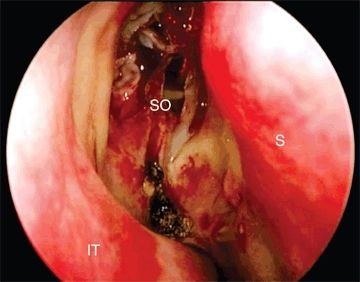
Figure 42.2 Endoscopic view after middle turbinectomy and posterior ethmoidectomy. (S, septum; IT, inferior turbinate; SO, sphenoid ostium.)
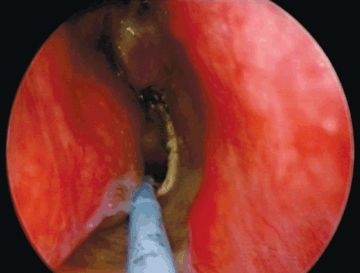
Figure 42.3 Inferior incision. Note how it is brought from the roof of the choana, onto the vomer, and then anteroinferiorly onto the floor of the nose.
The superior incision starts at the ostium of the sphenoid sinus and is then brought anterosuperiorly in a sharp curve to 1 cm below the skull base (Fig. 42.4). This is then brought anteriorly to the same vertical plane as the anterior limit of the inferior incision, and a vertical incision connects the two (Fig. 42.5).
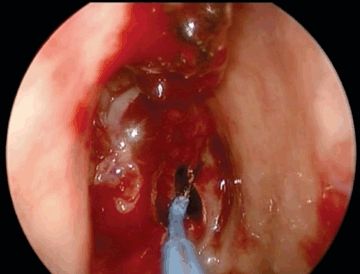
Figure 42.4 Superior incision beginning at the ostium of the sphenoid sinus, curving sharply superiorly onto the septum.
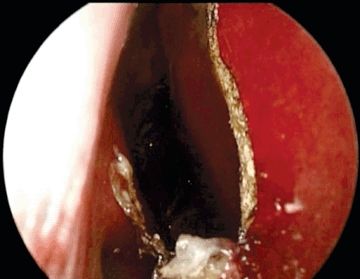
Figure 42.5 Anterior vertical incision connecting the two incisions.
The flap is then elevated in the submucoperichondrial and submucoperiosteal plane, back onto the face of the sphenoid, and as far as possible laterally (Fig. 42.6). This can be done with a combination of a Cottle elevator and endoscopic scissors. The flap is tucked into the nasopharynx until the tumor is removed, and it is needed for reconstruction (Fig. 42.7). The location of the pedicle must be kept in mind during the surgery so that it is not injured, especially during drilling of the floor of the sphenoid sinus. Alternatively, if a clival resection is planned, a wide antrostomy is performed and the flap is stored in the maxillary sinus to avoid obstruction of the surgical field throughout the procedure.
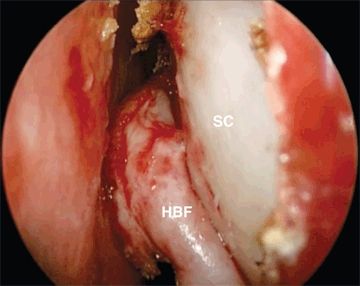
Figure 42.6 Flap elevated in the submucoperichondrial/submucoperiosteal plane. The free end is reflected posteriorly to aid visualization and to provide tension. (SC, septal cartilage; HBF, Hadad-Bassagasteguy flap.)
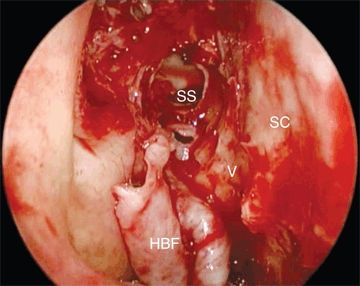
Figure 42.7 Flap elevated laterally off the anterior wall of the sphenoid sinus and tucked into nasopharynx. (V, vomer.)
Stay updated, free articles. Join our Telegram channel

Full access? Get Clinical Tree


